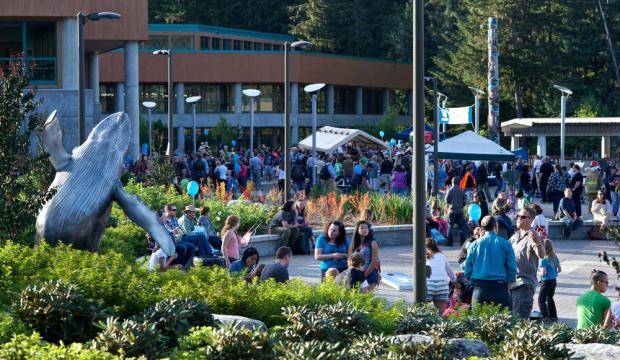It is time to speak up to support the University of Alaska.
By 2025, 65 percent of the jobs in Alaska will require some form of postsecondary education. The last time this was measured, just 37 percent of Alaskans held a degree and only 50 percent had some form of higher education. Alaska is facing large workforce gaps today and these will only grow if we can’t educate and train our own residents to compete in an economy that increasingly demands, and rewards, higher education.
The university has historically been a major economic driver and a primary source for developing Alaska’s workforce. So when UA President Jim Johnsen asked us to co-chair the Alaska Public Higher Education Roundtable, we quickly agreed.
We know that the university solves real world problems, produces an informed citizenry, and helps propel Alaska forward.
We want our young people to study, work and stay in Alaska. A strong state university helps ensure that happens, and positions our people to build innovative new enterprises that will serve our state well into the future. Maintaining our global leadership in Arctic research also is essential. The university is the number one Arctic research institution in the world, but it needs our support to remain competitive.
There is a direct correlation between educational attainment and income. Education builds a stronger, more diversified economy and healthier, more engaged citizens who give back to the communities in which they live and work. That’s great for families, businesses, and our state.
However, our university faces a series of challenges: Alaska’s low high school graduation and college going rates, the university’s land grant deficit (only Delaware received less than we did), recent state budget cuts, and a rapidly changing economy, which will demand a more highly educated workforce.
The University of Alaska is facing these issues head on, but it is being hit by year-over-year budget reductions. Over the last three years, the university’s budget has been cut by $52 million dollars. As a result, there are 927 fewer people working at UA today than in 2015, 50 academic programs have been suspended or discontinued, fewer classes are offered, less research is being done, and fewer Alaskans are being educated.
Through our engagement with the university, we know that it is proactively pursuing several worthwhile strategies to diversify and increase its revenues, reduce its costs, and gradually moderate its reliance on state funding. These include:
• Increasing enrollment through aggressive recruitment and online programs
• Building stronger partnerships with Alaska’s school districts
• Growing research capacity and investments
• Eliminating unnecessary redundant programs and services
• Cutting administrative overhead
• Increasing public/private partnerships
• Increasing philanthropic support
• Addressing its land grant deficit
• Looking out 10 years to make sure Alaska’s long-term education needs are met
However, the university still relies on the state for an important part of its funding. The Legislature should give the university ample time and the funding needed to continue the progress it is making to pursue these worthwhile strategies.
The Alaska Public Higher Education Roundtable agrees that it takes a great university to build a great state. The University of Alaska changes lives and creates economic opportunity at a time when our state desperately needs it. Let’s show our support.
Aaron Schutt and Ed Rasmuson are co-chairs of Alaska Public Higher Education Roundtable. Schutt resides in Fairbanks, and Rasmuson resides in Anchorage.
Aaron Schutt and Ed Rasmuson are co-chairs of Alaska Public Higher Education Roundtable. Schutt resides in Fairbanks, and Rasmuson resides in Anchorage.

